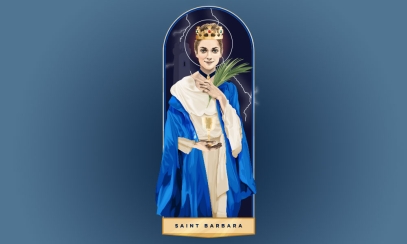
Is There a Doctor in the House?
Of the Catholic Church’s 33 Doctors of the Church (saints whose spiritual teachings and spiritual messages are considered to be a great spiritual value to all the faithful, three are women. Two of them—St. Therese of Lisieux and St. Teresa of Avila—have feast days in October. (The third, St. Catherine of Siena, has an April feast day.)
St. Therese of Lisieux, also known as Theresa of the Child Jesus and the Holy Face and as “The Little Flower,” seems an unlikely candidate for the title of “Doctor of the Church.” Therese was only 15 when she entered the Carmelite convent, where she died nine years later. Her spiritual autobiography, “The Story of a Soul,” was handwritten in several school exercise books and was never intended for publication. However, when it was published just after her death, it became an immediate best seller and has been translated into 40 languages.
One of the Church’s more “modern” saints, Therese died from tuberculosis in 1897 and was canonized in 1925. People were drawn to her because of her simplicity, her total surrender to Jesus. She never did anything “great.” She didn’t found a religious order, advise popes or kings, or lead an army. And neither will most of us—which makes Therese the perfect saint for us “little people.”
Her “little way” of holiness, of becoming like a little child, of trusting God totally, of making little sacrifices and performing little tasks for the glory of God, can be the “little way” for most of us, too. That profound simplicity, that childlike wisdom, led Pope John Paul II to declare Therese a “Doctor of the Church in 1997. Her feast day is Oct. 1.
The other Doctor whose feast we celebrate this month is St. Teresa of Avila. She lived in 16th century Spain and first demonstrated her religious fervor when she was only 7 years old. She and her brother ran away from home to become martyrs at the hands of the Moors. The runaways were brought home and Teresa’s religious drive took a more acceptable route as she became older. She entered the Carmelite convent when she was 20, although she spent three years at home receiving from an illness that left her permanently disabled.
Teresa of Avila had many visions and mystical experiences which were at first scoffed at, then finally acknowledged by her spiritual directors. In addition to prayer and meditation on these visions, Teresa was also a woman of action. Beginning when she was 47 (let’s hear it for midlife career changes!), Teresa undertook the founding of a stricter religious community, the Discalced (or Barefoot) Carmelites. She faced many obstacles, including opposition from her own family, but by the time she was 65, she had founded more than 40 convents that observed her stricter rules.



